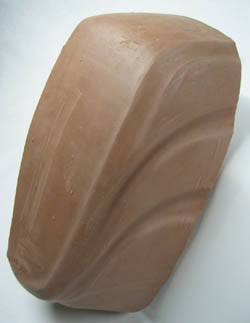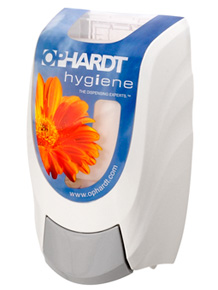
Styling a product for marketability
Staff
General DPN With each new trade show, companies position their latest wares to catch the attention of new buyers. Trying to convince customers that the product they should covet is here and not down the trade show aisle in the competitor’s booth can be a real challenge.
With each new trade show, companies position their latest wares to catch the attention of new buyers. Trying to convince customers that the product they should covet is here and not down the trade show aisle in the competitor’s booth can be a real challenge.
IDWS.ca is an Industrial Design Firm serving companies looking to bring new ideas to their product development process. This is the first contribution by David Duncan of his monthly blog for Design Product News. More of his blogs are available at www.idws.ca/blog.
How a company works at solving this can vary, here is a brief excerpt of how a new brand identity was created by merging styling and functionality to increase market share.
My firm, IDWS.ca, was approached by Ophardt Hygiene, a commercial soap dispenser company to create Industrial Design styling concepts for a new dispenser. They were looking to develop a dispenser that could be used everywhere from hospitals and airports to public spaces. Ophardt Hygiene is a global company with over 40 years in the design and manufacturing of the dispensing business, and they have facilities in Germany, Ireland, North America and Asia. So it was important for us to work closely with their Engineering and Marketing Teams so that we would have a successful design for a global market.
 At the onset the project was code named Neptune, and would offer some unique design ideas to aid in the manufacturing. One of which was an in-mold label design option, to make the finished product more customizable to various Ophardt Customers. So creating a stylish housing design that would show off these ideas with luxury on one hand, and renowned engineering technology on the other would be our challenge. In order to merge both the form and function successfully, we started sketching concepts of various shapes to see what ideas might develop.
At the onset the project was code named Neptune, and would offer some unique design ideas to aid in the manufacturing. One of which was an in-mold label design option, to make the finished product more customizable to various Ophardt Customers. So creating a stylish housing design that would show off these ideas with luxury on one hand, and renowned engineering technology on the other would be our challenge. In order to merge both the form and function successfully, we started sketching concepts of various shapes to see what ideas might develop.
The first stage: Brainstorming Ideas. Create image maps for the project. So things like stainless steel faucets, reflective surfaces, room finishing’s like molded base boards and marble surfaces and also natural objects like water, and plants were found and stored in a reference document. This would be drawn upon to associate ideas of how different objects help make a public space more appealing.
The second stage: Criteria Questions. Asking those in the project a set of questions like: What gives a sense of clean? What is associated in nature as being healthy or good for us? What kind of images do convenience and luxury conjure up when walking into a nice hotel? With questions like these, ideas start to develop for the designer in a form of appealing shapes representative of some of the image maps. These in turn can help steer the styling of a product in a new direction.
However, sketching organic shapes tied into the functional requirements on paper was not easy. We really wanted to bring elements of water and plant life into the shape. So to get these shapes right we started sculpting the form with Chavant Clay. This product development clay, seen mostly in automotive prototype builds, really helps bring tangible forms to reality quickly. As well the clay has a great ‘on-the-fly’ adjusting quality and can be transported easily into the boardroom.
 People generally feel less threatened to make suggestions to a clay model as it never seems final like a 3D rapid prototype can. It gives everyone a real time interaction too, as the clay can be pushed with a thumb to reshape a feature or even cut out completely. It gives everybody the opportunity to weigh in on the early styling direction, giving them time to consider other engineering features in which new ideas can emerge. When most of the ideas around the shape were settled on we turned to Rhino3D to start turning the clay shape into a 3D CAD model.
People generally feel less threatened to make suggestions to a clay model as it never seems final like a 3D rapid prototype can. It gives everyone a real time interaction too, as the clay can be pushed with a thumb to reshape a feature or even cut out completely. It gives everybody the opportunity to weigh in on the early styling direction, giving them time to consider other engineering features in which new ideas can emerge. When most of the ideas around the shape were settled on we turned to Rhino3D to start turning the clay shape into a 3D CAD model.
Sometimes the clay can be scanned; however there is a lot of prep work required to get the clay surface just right. In most projects the clay form is used to explore shape development and to brainstorm the general directions quickly. Using Rhinoceros helps build like the clay, but gives designers the accuracy required for manufacturing. As sculptors we know the shape from the clay and so it is just a matter of re-interpreting the general concept into tangent surfaces with drafts and wall thickness.
With the project moving into 3D, and Rhino’s ability to work with all major parametric 3D CAD systems on the market, it gives us the importing capabilities to get the supporting Engineering models on the screen. Parts of the assembly files like the dispenser chassis, pump, soap bottle sizes, and battery packs helped us tweak the styling features and the overall fit. Especially when it came with some tight project requirements, one of which was to hit a four inch depth off the wall, a National Fire
Protection Standard 7.2 used in hospitals for means of egress. And so Rhino helped us retain the styling creativity within the CAD model, which was very close to the original intent of the clay. This creative process was then in a format that the Engineering Department could use to manufacture the end product.
As Industrial Designers, ergonomics and styling are always helping us look at the whole of the project. But in the end we also have to bring to the table the ability to know how to make the styling fit with the functionality of the parts being used. In merging the engineering departments ‘know how’ with the marketing teams ‘wow factor’, the dispenser is on its way to offering a successful return on investment for Ophardt Hygiene.
IDWS Inc. provides creative Industrial Design solutions to help add a wow factor to new product ideas. Hands on sketching, virtual models, prototypes, and 3D CAD for advanced product development. Finding solutions for projects with sourced components, material choices and manufacturing options. Innovative ideas and project management to help merge both the Engineering function with the Marketing department dreams.
www.idws.ca
